Florida's congressional districts

Florida is divided into 28 congressional districts, each represented by a member of the United States House of Representatives. After the 2020 census, the number of Florida's seats was increased from 27 to 28, due to the state's increase in population, and subsequent reapportionment in 2022.[1]
Current districts and representatives
[edit]Republicans have complete control of the congressional redistricting process in Florida, as any new maps are drawn and passed by the Republican-held state legislature and signed into law by the Republican governor. This has resulted in Florida’s maps being an ‘extreme’ partisan gerrymander in favor of the Republican Party, with few competitive districts.[2] Despite challenges from groups such as the NAACP and Common Cause, the current map was upheld by a panel of judges from the United States District Court for the Northern District of Florida, which found that, while a partisan gerrymander, there was not sufficient evidence that the maps are a racial gerrymander.[3]
List of members of the United States House delegation from Florida, their terms, their district boundaries, and the district political ratings according to the CPVI. The delegation has a total of 28 members, including 8 Democrats, 19 Republicans, and one vacancy.
| Current U.S. representatives from Florida | |||||
|---|---|---|---|---|---|
| District | Member (Residence)[4] |
Party | Incumbent since | CPVI (2022)[5] |
District map |
| 1st | Vacant |
November 13, 2024 | R+19 | 
| |
| 2nd | 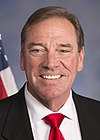 Neal Dunn (Panama City) |
Republican | January 3, 2017 | R+8 | 
|
| 3rd |  Kat Cammack (Gainesville) |
Republican | January 3, 2021 | R+9 | 
|
| 4th |  Aaron Bean (Fernandina Beach) |
Republican | January 3, 2023 | R+6 |  |
| 5th | 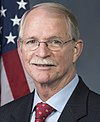 John Rutherford (Jacksonville) |
Republican | January 3, 2017 | R+11 |  |
| 6th |  Michael Waltz (St. Augustine Beach) |
Republican | January 3, 2019 | R+14 | 
|
| 7th |  Cory Mills (New Smyrna Beach) |
Republican | January 3, 2023 | R+5 | 
|
| 8th |  Bill Posey (Rockledge) |
Republican | January 3, 2009 | R+11 | 
|
| 9th |  Darren Soto (Kissimmee) |
Democratic | January 3, 2017 | D+8 | 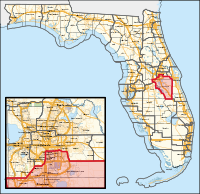
|
| 10th |  Maxwell Frost (Orlando) |
Democratic | January 3, 2023 | D+14 | 
|
| 11th |  Daniel Webster (Clermont) |
Republican | January 3, 2011 | R+8 | 
|
| 12th |  Gus Bilirakis (Palm Harbor) |
Republican | January 3, 2007 | R+17 | 
|
| 13th |  Anna Paulina Luna (St. Petersburg) |
Republican | January 3, 2023 | R+6 | 
|
| 14th | 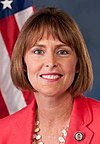 Kathy Castor (Tampa) |
Democratic | January 3, 2007 | D+8 | 
|
| 15th |  Laurel Lee (Tampa) |
Republican | January 3, 2023 | R+4 | 
|
| 16th |  Vern Buchanan (Sarasota) |
Republican | January 3, 2007 | R+7 | 
|
| 17th | 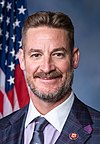 Greg Steube (Sarasota) |
Republican | January 3, 2019 | R+10 | 
|
| 18th |  Scott Franklin (Lakeland) |
Republican | January 3, 2021 | R+13 | 
|
| 19th |  Byron Donalds (Naples) |
Republican | January 3, 2021 | R+13 | 
|
| 20th |  Sheila Cherfilus-McCormick (Miramar) |
Democratic | January 18, 2022 | D+25 | 
|
| 21st |  Brian Mast (Fort Pierce) |
Republican | January 3, 2017 | R+7 | 
|
| 22nd |  Lois Frankel (West Palm Beach) |
Democratic | January 3, 2013 | D+7 |  |
| 23rd |  Jared Moskowitz (Parkland) |
Democratic | January 3, 2023 | D+5 |  |
| 24th | 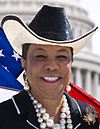 Frederica Wilson (Miami Gardens) |
Democratic | January 3, 2011 | D+25 |  |
| 25th | 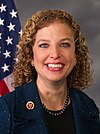 Debbie Wasserman Schultz (Weston) |
Democratic | January 3, 2005 | D+9 |  |
| 26th | 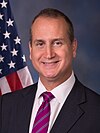 Mario Díaz-Balart (Miami) |
Republican | January 3, 2003 | R+8 |  |
| 27th |  María Elvira Salazar (Miami) |
Republican | January 3, 2021 | EVEN |  |
| 28th |  Carlos A. Giménez (Miami) |
Republican | January 3, 2021 | R+2 |  |
Historical district boundaries
[edit]-
Districts circa 1894
-
Districts from 2003 to 2013
-
Districts from 2013 to 2017
-
Districts from 2017 to 2023
Obsolete districts
[edit]History
[edit]2010 redistricting
[edit]In 2010 more than 63 percent of Florida voters approved the initiated Amendments 5 and 6, known as the "Fair District Amendments," to the state constitution, over the objections of the Republican-controlled legislature. These are intended to promote fairness in congressional districts[6] and "prohibit lawmakers from intentionally drawing districts that favor incumbents or political parties."[7][clarification needed]
The legislature had adopted new districts in 2012 as a result of the 2010 census. Their product was soon challenged in early 2011 by groups who had worked for passage of the amendments, including the League of Women Voters and Common Cause.[7] The trial revealed much secret dealings by party operatives and lawmakers; the court set a new legal standard. At one point the court excluded the press and shut down the TV feed in order to allow three hours of testimony by a political operative.[7]
On July 9, 2014, a Florida judge ruled that state Republicans had illegally drawn the state's congressional districts. Judge Terry P. Lewis of Florida's Second Judicial Circuit ordered that the 5th and 10th districts be redrawn.[8] On appeal, the Florida Supreme Court ruled on July 9, 2015 that several more districts had to be redrawn, and that the legislature had unconstitutionally worked to benefit the Republican Party. The historic ruling was considered likely to affect most of the state's 27 districts.[7]
On December 2, 2015, the state supreme court approved a remedial plan for districting for the 2016 elections.[9][10][11] All but Districts 1, 8, and 19 were altered in some way by the plan.
2020 redistricting
[edit]This section is empty. You can help by adding to it. (January 2023) |
See also
[edit]Notes
[edit]28 districts.
References
[edit]- ^ Merica, Dan; Stark, Liz (April 26, 2021). "Census Bureau announces 331 million people in US, Texas will add two congressional seats". CNN. Retrieved April 26, 2021.
- ^ https://fivethirtyeight.com/videos/ron-desantis-drew-florida-an-extreme-gerrymander/
- ^ Fineout, Gary (March 27, 2024). "Federal court upholds DeSantis-backed congressional map". POLITICO.
- ^ "Office of the Clerk, U.S. House of Representatives". clerk.house.gov. Retrieved January 12, 2022.
- ^ "2022 Cook PVI: District Map and List". Cook Political Report. Retrieved January 5, 2023.
- ^ "Florida Congressional District Boundaries, Amendment 6 (2010)", Ballotpedia
- ^ a b c d Mary Ellen Klas, "Florida Supreme Court orders new congressional map with eight districts to be redrawn", Tampa Bay Times, 9 July 2015, accessed 11 February 2016
- ^ Alvarez, Lizette (July 10, 2014). "Judge Rules G.O.P. Illegally Redrew Florida Districts". New York Times. Retrieved July 26, 2014.
- ^ Madigan, Nick (July 9, 2015). "Florida Court Finds Politics Determined District Lines". The New York Times. ISSN 0362-4331. Retrieved February 9, 2016.
- ^ Klas, Mary Ellen (July 9, 2015). "Florida Supreme Court orders new congressional map with eight districts to be redrawn". Tampa Bay Times. Retrieved February 9, 2016.
- ^ Dixon, Matt (December 2, 2015). "Siding with redistricting plaintiffs, top court upends political landscape". POLITICO. Retrieved April 15, 2020.
External links
[edit]- Rose Institute of State and Local Government, "Florida: 2010 Redistricting Changes", Redistricting by State, Claremont, CA: Claremont McKenna College, archived from the original on September 15, 2020




